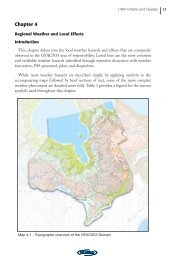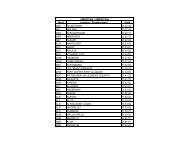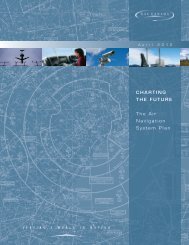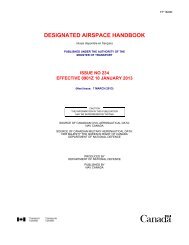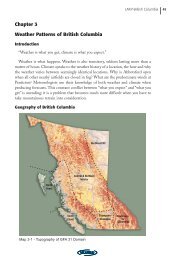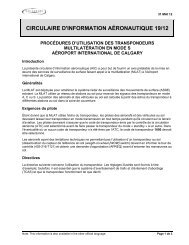Faster, cheaper, safer; - Nav Canada
Faster, cheaper, safer; - Nav Canada
Faster, cheaper, safer; - Nav Canada
Create successful ePaper yourself
Turn your PDF publications into a flip-book with our unique Google optimized e-Paper software.
"You can write a specification," and contract out the development work, says Sid Koslow, <strong>Nav</strong><br />
<strong>Canada</strong>'s vice-president and chief technology officer. "But it's very difficult to get all the details<br />
straight and you often end up with systems where it takes longer and costs more than you would<br />
expect."<br />
A decade ago, <strong>Nav</strong> <strong>Canada</strong> decided to start building its own air traffic management (ATM) gear<br />
by putting computer specialists on staff and teaming them up with controllers.<br />
The daily flow of trans-Atlantic traffic begins at night in North America as planes, up to 120 an<br />
hour, move up the eastern seaboard and from points southwest and funnel into a narrow band of<br />
airspace off Newfoundland's east coast.<br />
Routing for each plane has already been assigned, based on flight plans filed earlier by the<br />
airlines. The routing "profile" for each must ensure "conflict free" separation from the<br />
Newfoundland-Labrador coast to landfall in Europe.<br />
By the time they reach the oceanic entry point, "we know exactly where they need to be, what<br />
speed they need to be at, the flight level that they need to be at and the track that they need to be<br />
on," says Mouland.<br />
Controllers compress the traffic into a handful of eastbound "tracks" mapped out daily in Gander<br />
and based primarily on the route of the jet stream and its fuel-saving tail winds. The planes return<br />
the next morning and afternoon, this time on routes mapped by Prestwick that minimize the jet<br />
stream's headwinds.<br />
Air traffic control, meanwhile, relies on two types of navigation: positive and procedural.<br />
Positive control tracks a plane on a radar scope. When radar is not available, procedural control<br />
is used, with pilots reporting their positions to the oceanic centres every several minutes,<br />
typically via High Frequency (HF) radio.<br />
But procedural control means controllers have had to put bigger "safety bubbles" -lateral and<br />
vertical separation -around planes, since their exact, real-time position can't be tracked until it<br />
reaches radar-controlled airspace.<br />
GAATS+ lessens reliance solely on procedural control - therefore allowing reduced separation -<br />
by extending positive control using traditional radar feeds from the Department of National<br />
Defence's North Warning System along the northeast coast.<br />
It also exploits newer GPS surveillance technologies, such as Automatic Dependent<br />
Surveillance-Broadcast (ADS-B), which allows ADS-B-equipped planes to automatically<br />
broadcast their GPS positions every second. In place over Hudson Bay since 2009, <strong>Nav</strong> <strong>Canada</strong><br />
plans to open more ADS-B stations in southern Greenland this fall and shrink the oceanic<br />
separation standard in that area even further, from five minutes to five nautical miles.



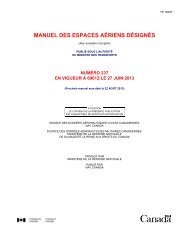
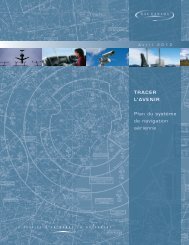

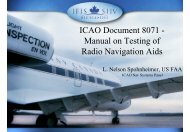
![[ cac ] canadian airport charts - Nav Canada](https://img.yumpu.com/12328212/1/190x252/-cac-canadian-airport-charts-nav-canada.jpg?quality=85)
